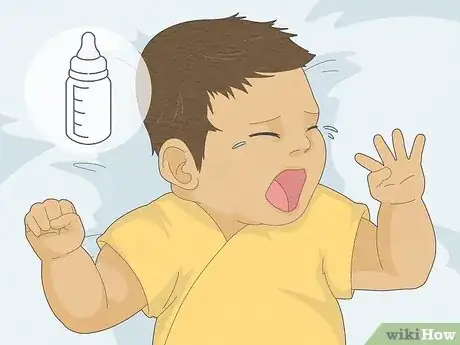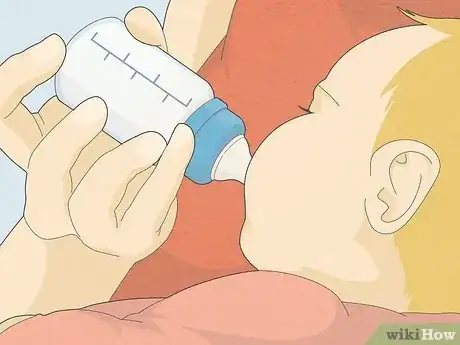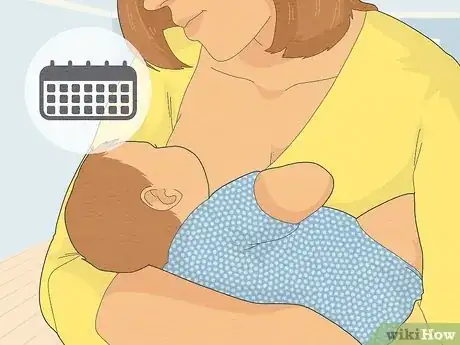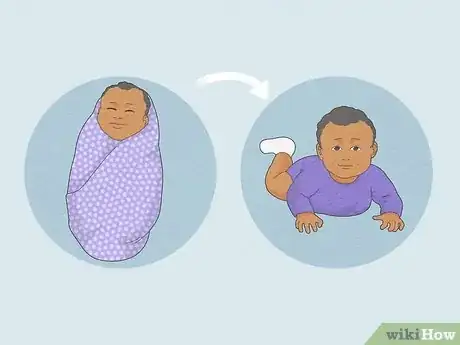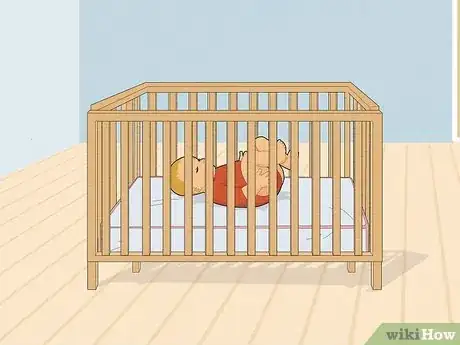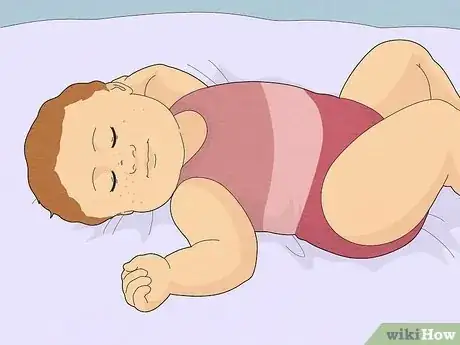This article was co-authored by Julie Matheney, MS, CCC-SLP, CLEC, IBCLC and by wikiHow staff writer, Amber Crain. Julie Matheney is an International board certified Lactation Consultant (IBCLC) and the Founder of The LA Lactation Lady, her lactation consulting business based in Los Angeles, California. She has over eight years of lactation consulting experience. She earned her MS in Speech-Language Pathology from Miami University and has earned a Certificate of Clinical Competence for Speech-Language Pathologists (CCC-SLP). She also earned her Certified Lactation Educator Counselor (CLEC) certificate from the University of California, San Diego.
There are 10 references cited in this article, which can be found at the bottom of the page.
This article has been viewed 3,914 times.
Breastfeeding your baby is the ultimate bonding experience, but if your newborn seems hungry all the time, it can be exhausting, too. While cluster feeding is completely normal, you probably have lots of questions about it—and we're here to answer all of them. In this article, we'll explain how long cluster feeding lasts and why your baby is doing it, as well as share tips on how to reduce or stop the cycle. If you're a tired new mama who just needs a peaceful night, scroll on down.
Things You Should Know
- Cluster feeding is when a baby wants several short feeds in quick succession. It's completely normal, but can be tiring for mama.
- Cluster feeding happens during growth spurts, and each spurt only lasts a few days. It's important for your baby to feed whenever they're hungry during this time.
- To reduce cluster feeding, avoid stimulation when your baby fusses so they fall back asleep. You can dim the lights, hold them close, rock them, or listen to soft music.
Steps
References
- ↑ https://www.pregnancybirthbaby.org.au/cluster-feeding
- ↑ https://www.parents.com/baby/breastfeeding/problems/cluster-feeding-your-newborn-a-guide-for-parents/
- ↑ https://kidshealth.org/en/parents/sleepnewborn.html
- ↑ https://www.breastmilkcounts.com/breastfeeding-101/feeding-patterns/
- ↑ https://www.luriechildrens.org/en/blog/cluster-feeding-faqs/
- ↑ https://www.cdc.gov/nutrition/infantandtoddlernutrition/breastfeeding/how-much-and-how-often.html
- ↑ https://www.parents.com/baby/breastfeeding/problems/cluster-feeding-your-newborn-a-guide-for-parents/
- ↑ https://www.pregnancybirthbaby.org.au/cluster-feeding
- ↑ https://www.breastmilkcounts.com/breastfeeding-101/feeding-patterns/
- ↑ https://www.parents.com/baby/breastfeeding/problems/cluster-feeding-your-newborn-a-guide-for-parents/
- ↑ https://wicbreastfeeding.fns.usda.gov/cluster-feeding-and-growth-spurts
- ↑ https://americanpregnancy.org/healthy-pregnancy/breastfeeding/low-milk-supply/
- ↑ https://www.breastmilkcounts.com/breastfeeding-101/feeding-patterns/
- ↑ https://www.texashealth.org/baby-care/Infancy/frequency-days-and-cluster-feeding
- ↑ https://www.parents.com/baby/breastfeeding/problems/cluster-feeding-your-newborn-a-guide-for-parents/
- ↑ https://wicbreastfeeding.fns.usda.gov/cluster-feeding-and-growth-spurts
- ↑ https://kidshealth.org/en/parents/sleepnewborn.html
- ↑ https://www.stanfordchildrens.org/en/topic/default?id=infant-sleep-90-P02237


